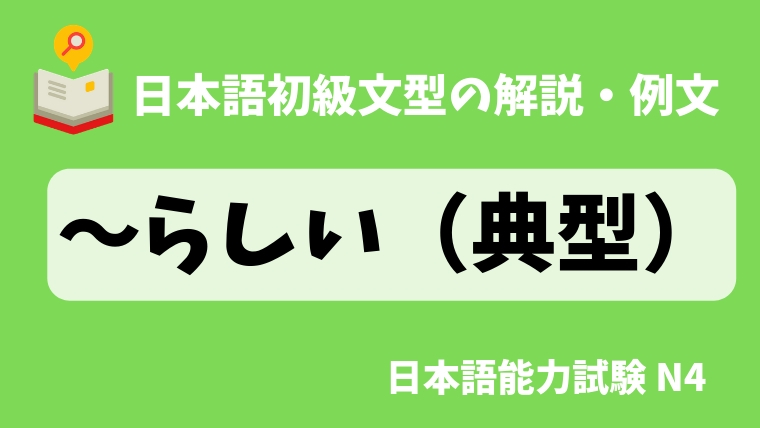(2025/12/31 11:17:56時点 Amazon調べ-詳細)
解説:〜らしい(典型)
●意味
〜の特徴がある。
そのものの典型的な性質を持っていることを表したい時に使う。
“Has the characteristic of ~.”
Used when you want to express that something has a typical quality of that thing.
●接続
N + らしい
●日本語能力試験(JLPT)のレベル
N4
●備考
い形容詞と同じように活用する。
It is conjugated in the same way as an i-adjective.
| 〜らしいです | 〜らしくないです |
| 〜らしかったです | 〜らしくなかったです |
例文
子供は子供らしくもっと外で遊んだらどうなの?
Why don’t you go out and play more like a kid?
学生なんだから、アルバイトばかりしてないで、学生らしく勉強したらどう?
You’re a student, so why don’t you study like a student instead of working part-time all the time?
どうしたの落ち込んで。田中さんらしくないよ。
What’s wrong? You seem down. This isn’t like you, Tanaka.
今日は夏らしい暑さでしたね。
It was a hot day today, just like summer.
山本さんって本当に男らしくて、かっこいいよね。
Yamamoto is really manly and cool?
会社員になってから、自分らしく生きるのが難しくなってきた。
Since becoming a company employee, it’s become difficult to live true to myself.
紅葉が見られるようになって、だんだん秋らしくなってきました。
As we start to see the leaves change color, it’s gradually becoming more autumn-like.
新しく入ってきた新入社員、もうちょっと社会人らしい髪型にできないんだろうか。
The new employee who just joined the company, couldn’t they get a more professional haircut?



